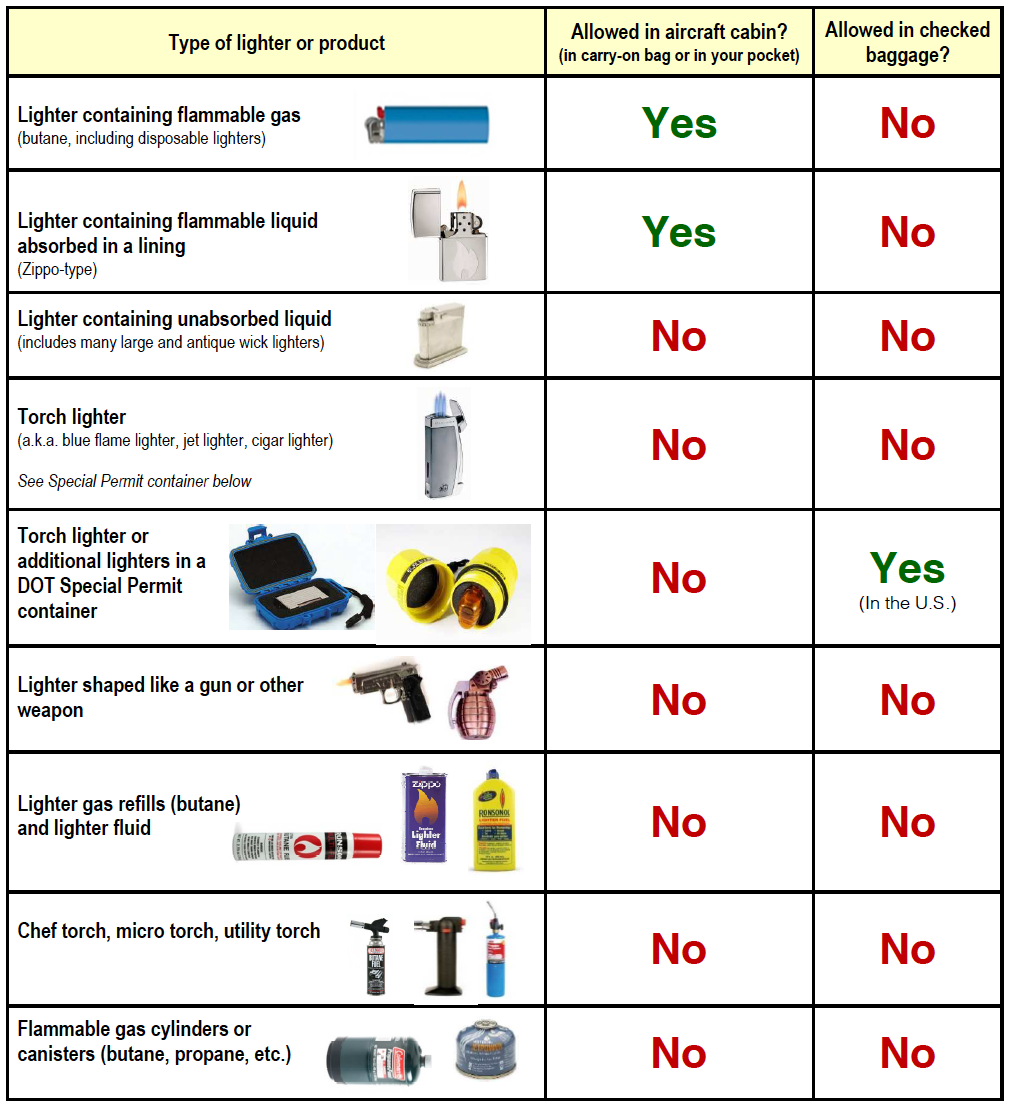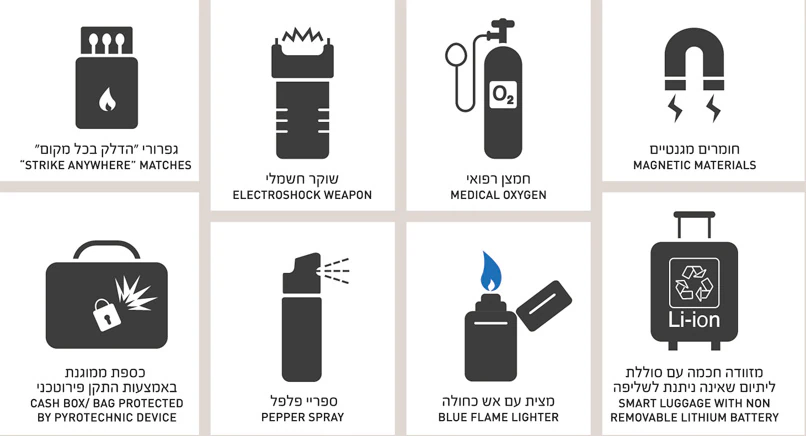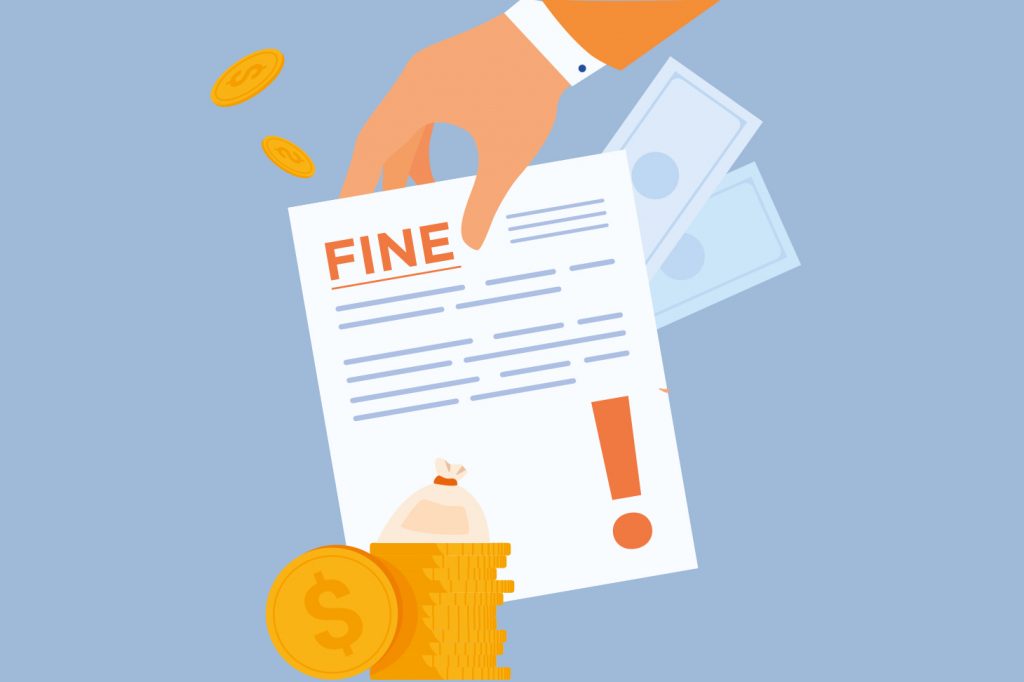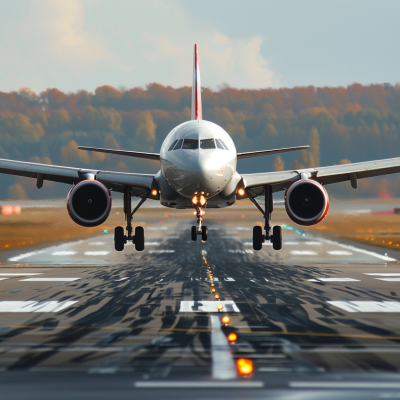Can you bring your favorite lighter on a plane? It’s a common question for smokers and collectors alike.
Having your trusty lighter confiscated by the Transportation Security Administration (TSA) can be frustrating, especially if you’re unsure about the regulations.
You don’t want to break the rules and accidentally face unnecessary delays or fines, but don’t worry!
In this blog post, we’ll discuss the TSA’s regulations for bringing lighters on planes so you can travel confidently and keep your cherished lighters safe.
Get ready to learn everything you need to know about packing your lighters, whether you’re a seasoned traveler or preparing for your first flight.
General Regulations Associated with Bringing Lighters on Plane
General regulations regarding bringing lighters on planes focus on ensuring passenger safety.
Typically, each passenger is allowed to carry one lighter, which must be kept on their person or in carry-on luggage.
Lighters are not permitted in checked baggage to prevent the risk of accidental ignition.
Regulations about lighters are strict and enforced by aviation authorities to maintain a safe environment aboard aircraft.
Checking the latest guidelines from the TSA or specific airlines before traveling is advisable, as rules can change.
Restrictions and Prohibitions

TSA strictly prohibits some lighters due to safety concerns and potential misuse.
These include torch lighters, blue flame lighters, arc lighters, plasma lighters, electronic lighters, and any other type of lighter that produces a very hot or intense flame.
Additionally, lighter fluid and butane refills are not permitted on planes under any circumstances.
Exemptions and Special Instructions
Sometimes, the TSA may allow a fueled lighter in checked luggage if enclosed in a DOT-approved case.
These cases are designed to prevent accidental ignition and leakage, providing an added layer of safety during transportation.
However, this exemption is not guaranteed and is subject to the discretion of the TSA officer at the security checkpoint.
If you have a rare or sentimental lighter that cannot be safely emptied of fuel, contact your airline and the TSA well in advance for specific packing instructions. They may require:
- Using a specific DOT-approved case
- Providing a detailed description of the lighter and its purpose
- Allowing extra time at the security checkpoint for inspection
- Preparing a written declaration for the item
For example, a collector needed to transport a vintage lighter that couldn’t be emptied without causing damage.
They contacted the airline and TSA weeks before their flight, followed the packing instructions, and allowed extra time at security. As a result, they successfully transported the lighter.
Understanding these guidelines and exceptions lets you make informed decisions about traveling with lighters and avoid potential delays or confiscation at security checkpoints.
What Types of Lighters Are Allowed in The Plane

TSA regulations state that only specific types of lighters are allowed on airplanes, and they must generally be carried on the person, not in checked or carry-on luggage.
It’s important to note that each passenger is typically limited to carrying one lighter.
Passengers can bring the following types of lighters on board:
- Disposable Lighters: These are standard, non-refillable lighters, such as BIC lighters, commonly used for lighting cigarettes or small candles.
- Zippo Lighters: These refillable metal lighters are known for their durability and windproof design. However, they are only permitted if they do not contain fuel when carried on a plane.
- Electric Lighters: This category includes battery-operated or rechargeable lighters, such as plasma or arc lighters. They are allowed under certain conditions, which we’ll discuss in the next section.
Rules for Carrying Lighter in Different Luggages on Plane
TSA regulations require passengers to carry lighters on their person or in carry-on baggage, never in checked luggage.
Lighters should be easily accessible for inspection during security screening, preferably in a clear, transparent bag.
Packing lighters in checked bags is strictly prohibited due to the potential safety hazards of their flammable contents in the cargo hold’s varying conditions.
The following sections will provide more details on the requirements and guidelines for carrying lighters in carry-on and the reasons behind the checked luggage prohibition.
1. Carry-On Luggage
Keeping it in your carry-on baggage is crucial when traveling with a lighter.
TSA regulations require passengers to carry permitted lighters in their bags or small bags that remain with them throughout the flight.
This measure ensures that the lighter is always under the passenger’s control and can be easily inspected by security personnel if necessary.
To facilitate the security screening process, it is recommended that you place your lighter in a clear, transparent bag before going through the checkpoint.
This allows TSA officers to quickly examine the lighter without handling it further or searching your belongings.
2. Checked Luggage
TSA regulations strictly prohibit the carrying of lighters in checked luggage.
This rule applies to all lighters, including disposable, Zippo, and electric lighters.
The main reason behind this restriction is the potential safety hazard of lighters in an aircraft’s cargo hold.
Lighters contain flammable materials, such as lighter fluid or pressurized gases, which can ignite or explode under certain conditions.
The cargo hold of an airplane is an environment where temperature, pressure, and other factors can fluctuate significantly, increasing the risk of a fire or explosion.
TSA prohibits lighters in checked luggage to mitigate these risks and ensure the safety of all passengers and crew members.
Practical Tips for Travelers
Knowing the TSA regulations and following some practical tips is essential when traveling with lighters to ensure a smooth and hassle-free airport experience.
Here are some useful guidelines to keep in mind:
-
Empty refillable lighters before packing in checked luggage to comply with TSA regulations and prevent safety hazards. Drain fuel and air out thoroughly.
-
Use airline-approved containers for lighters when required. Choose containers that prevent accidental activation and fit you’re lighter.
- Check with your airline for specific lighter restrictions beyond TSA guidelines. Visit their website or contact customer service to avoid surprises at the airport.
By following these practical tips and staying informed about the regulations, you can ensure that your travel experience with lighters is as smooth and stress-free as possible.
Consequences of Non-Compliance

Immediate Penalties for Non-Compliance
Failing to follow TSA regulations regarding lighters on planes can lead to serious consequences.
Additionally, trying to bring banned items through security can result in significant delays, as TSA agents will need to conduct additional screening and may even involve law enforcement.
These delays can cause you to miss your flight, disrupt travel plans, and lead to further expenses.
Long-Term Implications
Beyond the immediate penalties, violating TSA regulations can have long-lasting effects on your ability to travel.
Depending on the severity of the infraction, you may be placed on a watch list, which can lead to increased scrutiny and more extensive screening during future trips.
This additional screening can be time-consuming and stressful, making your travel experience less enjoyable.
In some cases, repeated violations may even result in being denied the ability to fly, significantly limiting travel options.
Common Misunderstandings To Avoid
One of the most common misconceptions about TSA lighter regulations is that all lighters are prohibited in carry-on luggage.
However, as mentioned above, certain lighters, such as disposable and Zippo lighters without fuel, are allowed in carry-on bags.
Another frequent misunderstanding is that TSA rules are consistent across all airports and airlines.
In reality, some airports and airlines may have additional restrictions, so it’s essential to check with your specific airline before traveling.
By understanding the nuances of TSA regulations and clearing up these misunderstandings, you can avoid inadvertently violating the rules and facing the consequences.
Conclusion
Understanding and adhering to TSA regulations regarding lighters on planes is crucial for a smooth and stress-free travel experience.
By familiarizing yourself with the types of lighters permitted in carry-on and checked luggage and the proper ways to pack them, you can avoid costly fines, time-consuming delays, and potential long-term consequences.
Remember, while some lighters are allowed on planes under specific circumstances, it’s always best to err on caution and leave lighters at home if you’re unsure about their compliance with TSA rules.
TSA guidelines vary depending on the airport and airline, so it’s essential to check the latest regulations before each trip.
Visit the official TSA website or contact your airline to ensure you have the most up-to-date information on lighter restrictions and other prohibited items.
By staying informed and compliant with TSA regulations, you can focus on enjoying your journey without worrying about potential issues at security checkpoints.
Frequently Asked Questions
What Should I Do if My Lighter Is Confiscated?
If your lighter is confiscated, accept the TSA’s decision and proceed through security. Plan to purchase a new lighter at your destination or use alternative lighting methods.
How Do I Appeal a TSA Decision?
To appeal a TSA decision, contact the TSA Contact Center within 30 days of the incident. Provide your contact information, flight details, and a brief issue description.
Are Vintage or Antique Lighters Treated Differently by TSA?
Vintage or antique lighters are subject to the same TSA regulations as regular lighters. They must be emptied of fuel and stored appropriately in checked luggage or carried personally with your handbags.






